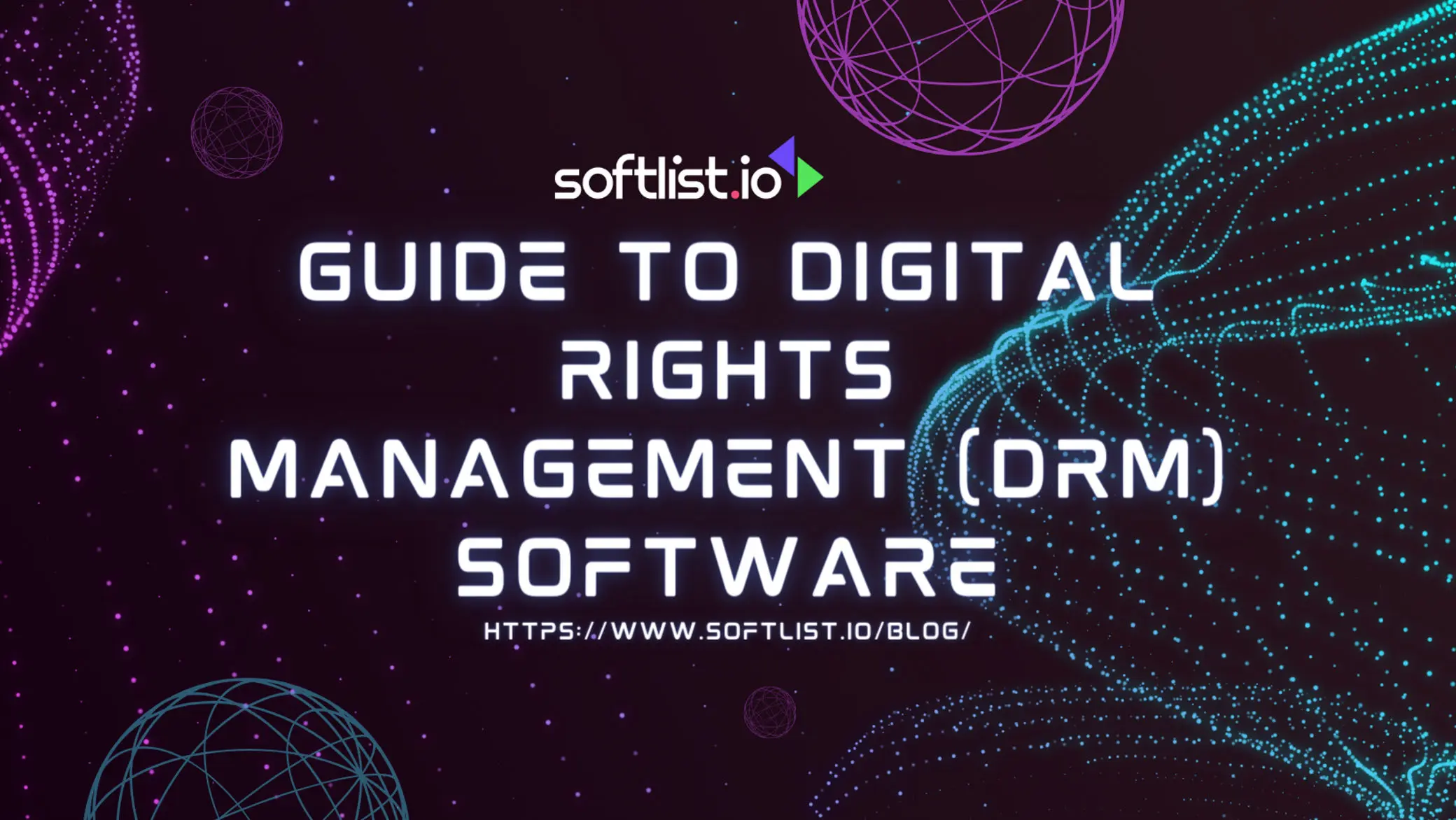Are you looking for a guide to digital rights management? With the ever-changing landscape of copyright and intellectual property law, keeping up with the latest developments can be difficult.
Luckily, we’ve got you covered. This blog post will give you an overview of digital rights management and some tips on protecting your work. Stay tuned!
Overview of Digital Rights Management
What is DRM?

Source: William Fortunato of Pexels
Digital rights management (DRM) is a technology that allows content owners to control how people use their digital materials. It has become increasingly important in the age of digital media, where it’s easy to copy and distribute copyrighted material without permission. DRM helps protect the rights of creators by making sure that only those with permission can access or use their work.
DRM is used by many organizations, companies, publishers, and copyright holders to protect their digital material from being copied and distributed without their permission. This includes using different mechanisms (such as encryption or obfuscation) to prevent the material from being copied or to limit its use in several ways that may be undesirable to them (such as limiting viewing time).
DRM aims to prevent unauthorized end users from accessing software, products, confidential documents, or media files. It is most commonly used in software and movies but can also be applied to other types of content like video games, music, and images. When you’re using DRM software to protect your eBooks or music, you need to be able to verify that the software is working correctly.
The DRM software category is one of the most critical categories in today’s software market. There are several different types of DRM solutions available. Some are similar to traditional software, while others are more complex and require special hardware and software.
How Does it Work?

Source: Anna Shvets of Pexels
Digital Rights Management (DRM) is a technology that has become increasingly important in the digital age, as it allows content owners to protect their digital materials from unauthorized redistribution, access, and use. DRM technologies work by restricting how digital content can be used, such as preventing people from downloading and copying films or other copyrighted materials without permission. This helps ensure content owners are compensated for their work if it’s illegally distributed or copied. It also creates trust in the digital market by showing customers that their purchased content is secure.
DRM is used to control access to digital content. The content can be music, movies, books, or software. DRM can also be applied to other types of electronic media, such as images and photographs. Music links use a special type of software that is installed on your computer. This software ensures that only authorized users can listen to the music files that you have purchased.
DRM allows you to share your content with others while ensuring that they do not have unlimited access to it. For example, with a DRM-protected music file, you may only allow the recipient to play the song three times before they must purchase it to continue playing it. Compare and filter the tools before choosing DRM.
DRM allows content creators like movie studios and record labels to control how consumers use their content. They can choose which devices are allowed to play the content, where it can be viewed, and for how long it can be viewed for free before requiring payment.
Why Use DRM?

Source: Sora Shimazaki of Pexels
DRM is a great way to protect your work from being used without permission. Only people with the correct permissions can view, download, and use your material. Additionally, it helps ensure you’re compensated for your work if it’s illegally distributed or copied. Finally, using DRM can help create trust in the digital market by showing customers that their purchased content is secure from unauthorized access. You should find the top digital rights to protect your work.
The best Digital Rights Management software (DRM) is a type of technology that helps protect the content you own from unauthorized use. It’s used in various industry-leading, from movies and music to video games, software, and e-books.
DRM allows you to enjoy your digital media without worrying whether it will work on another device or if someone else can access it. DRM also helps prevent piracy and copyright infringement.
The main goal of any DRM system is to control access to copyrighted content while ensuring that users have access when needed. Most DRM solutions use encryption technologies and software licensing models to manage the distribution, use, and protection of digital media files such as audio or videos to accomplish this goal.
What Are the Features of Drm?

Source: Pavel Danilyuk of Pexels
Digital Rights Management (DRM) is a method of restricting the use of proprietary hardware and software. It is often applied to music, movies, games, and other forms of entertainment. Digital rights management software prevents unauthorized data duplication by encoding it in an encrypted format that can only be accessed with a password or other authentication key.
The top Digital Rights Management software helps you to protect your work. It also helps you to track every copy of your files. It also helps you to stop piracy, illegal distribution, and copying of your content.
The following are some features of DRM:
Copy protection: The data is protected using encryption so it cannot be copied onto other devices. For example, you can buy a DVD movie but only copy it onto your computer’s hard drive or portable device after first decrypting the data.
Usage control: The feature lets you specify how often you want to view a particular content before it expires. This feature eases up the workload on the owner’s side as he/she does not have to worry about managing all their licenses manually.
Protection against piracy: DRM can help prevent piracy by making it difficult for unauthorized users to copy digital content and redistribute it illegally. DRM protects digital files with encryption keys or other security mechanisms that only allow authorized users to access them.
Access control: Access control prevents unauthorized users from accessing digital files they don’t own or don’t have permission to use.
Points to Consider in Implementing DRM Software

Source: Greta Hoffman of Pexels
DRM tutorial explains what DRM is and how it works. Digital Rights Management protects digital content from unauthorized use. When implementing DRM, there are a few key points to consider.
Adequate Access
The most important is ensuring that users have adequate rights to access and use the material they purchase.
Clear Instructions
Second, creating an easy-to-use system with clear user instructions is essential so that customers can use their purchased materials correctly.
Updated System
Third, it’s important to ensure your DRM system is regularly updated to remain up-to-date with any changes in copyright or intellectual property law.
In addition to understanding legal frameworks such as copyright and intellectual property law, you can take a few other steps to protect your work with DRM systems.
Clear Terms of Services
Fourth, make sure you have clearly stated terms of services regarding what paying users can do with your material once they purchase it. This includes whether they can modify or redistribute it without permission and any usage restrictions you wish to impose on them.
Use of Authentication Methods
Fifth, consider using authentication methods that require users to prove they are authorized before accessing the material you own, such as password protection or two-factor authentication protocols such as biometric verification tools like face recognition software or fingerprint scanners.
Monitor Digital Assets
Lastly, you should regularly monitor usage of your material online for any signs of piracy or unauthorized
How To Implement DRM

Source: Tima Miroshnichenko of Pexels
To best protect your work with DRM, there are several steps you should take:
Identify Your Content:
Determine which of your digital materials need to be protected and how much protection they require. Different types of content may require different levels of protection.
Select A DRM System:
Choose a DRM system that meets your specific needs. Several different types of DRM are available, so make sure to evaluate them all before making your decision.
Integrate Your Content With The System:
Once you’ve chosen a system, you’ll need to integrate it with your content. This will allow the DRM to recognize and protect each piece of content individually.
Monitor Use Of Protected Content:
Finally, it’s important to keep an eye on how your protected content is accessed and used. This will help ensure that the rights holders’ interests are being respected and their work isn’t being misused or exploited.
Best Practices for Securing Your Digital Assets

Source: Anna Shvets of Pexels
When it comes to protecting your digital asset management, there are a few best practices you should follow.
Use Strong Passwords:
Ensure all your accounts have strong passwords that cannot be easily guessed or cracked. Use two-factor authentication tools such as biometric verification systems to further secure access management to protected materials.
Monitor Online Activity:
Regularly monitor online activity and search for unauthorized usage or piracy signs. This will help you quickly detect and address any potential issues before they become significant problems.
Educate Yourself On Copyright Law:
Learn about copyright law and other legal frameworks in place to protect creators’ rights online so you can better protect yourself against misuse of your work.
Use Watermarking:
Place unique watermarks on each piece of content to help identify it and make it more difficult for unauthorized users to copy or redistribute it without permission.
Stay Up To Date On Security Practices:
Keep up with the latest security practices and technologies so that you can ensure your digital assets are always protected.
Different Types of DRM Solutions Available Today

Source: Karolina Grabowska of Pexels
Several different types of Digital Rights Management solutions available today provide varying levels of protection. Some popular options include:
Digital Rights Management (DRM):
This is a software-based system that encrypts your content and restricts access to it. It also prevents users from copying or distributing the material without permission.
Content Protection Platforms (CPP):
These platforms use a combination of encryption and authentication methods to protect digital assets and make sure only authorized parties have access to them.
Access Control Solutions:
These solutions allow you to control who can access your content by setting up user permissions or IP address restrictions. They can also help you monitor usage patterns across multiple devices.
Copy Protection Systems:
These systems prevent users from making copies of your content by using watermarking or other methods. They can also make it more difficult for unauthorized users to access or distribute the material.
Rights Management Services (RMS):
These services help you manage and control access assets by keeping track of usage rights and permissions. They can also help you enforce copyright laws and prevent piracy.
No single solution is perfect, but by understanding the different options available, you can choose the best one for your needs. It’s also important to keep in mind that no DRM system is 100% effective, so it’s important to use multiple layers of protection to best secure your content.
Final Thoughts
Digital Rights Management (DRM) is an essential tool for protecting digital assets online. By understanding the different types of DRM solutions available and following best practices, you can ensure that your content is secure and only accessed by authorized parties. Taking steps to protect your digital assets will help you keep control over them while at the same time respecting creators’ rights and preventing piracy.
FAQs
What still uses DRM technology?
DRM is used in various industries such as media, gaming, publishing, and software. Popular forms of it are found in streaming services like Netflix and Hulu, game consoles like the PlayStation or Xbox, and eBook readers like Kindle or iBooks.
How effective is DRM software in 2023?
DRM is not a perfect solution, and it can be circumvented by those with the resources and technical knowledge to do so. However, using multiple layers of protection can help make it harder for unauthorized users to access your content. Additionally, regularly monitoring online activity can quickly detect potential issues before they become major problems.
What content is protected by DRM?
It can be applied to any digital asset, including photographs, videos, audio files, eBooks, software programs, etc. It’s important to note that it only protects digital content distributed online or through other digital channels; most DRM systems do not cover physical materials such as books or CDs.







